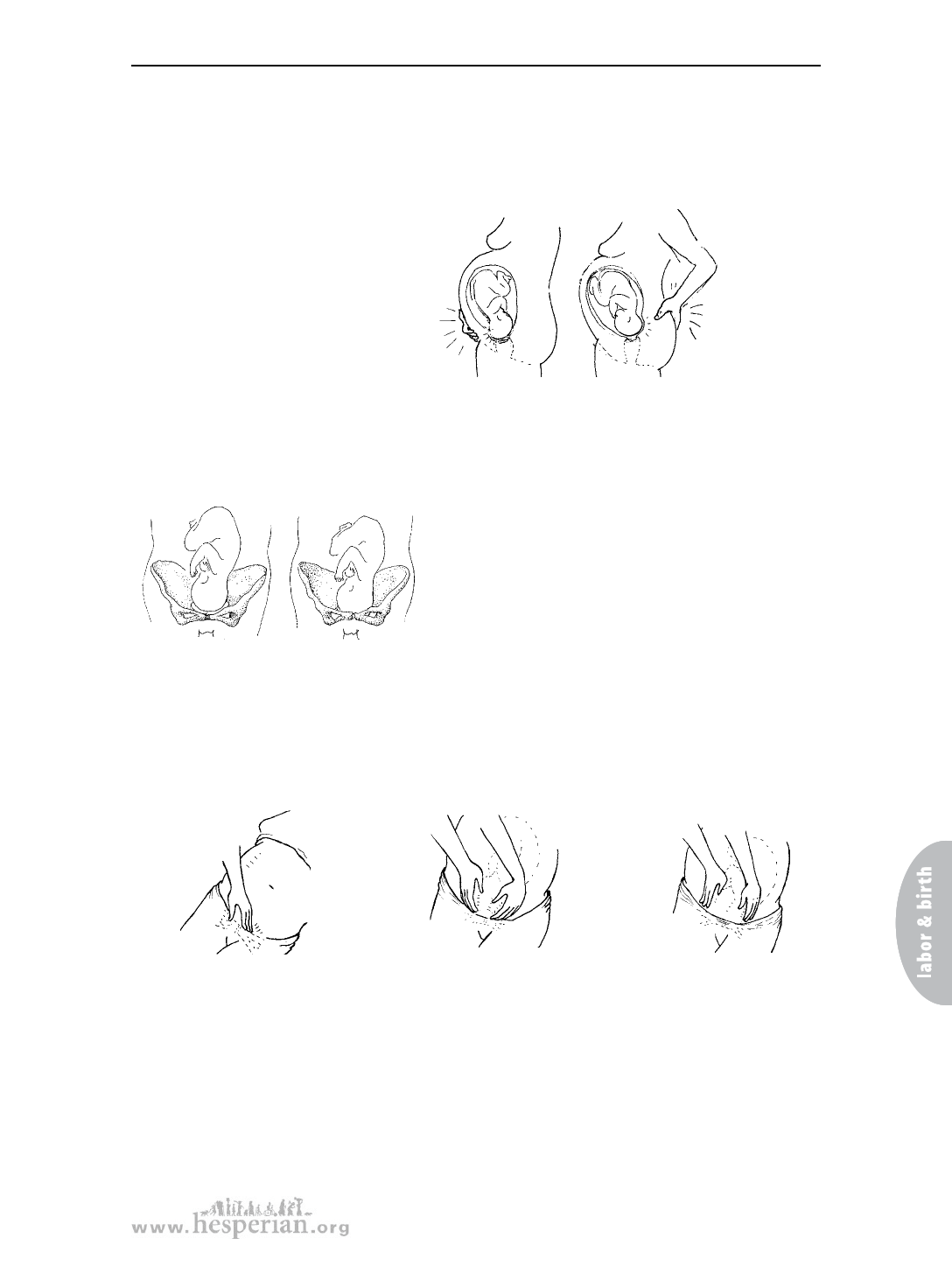
Signs for the midwife to check in stage 1
Is the baby lying head down? Which way does he face?
Most babies lie with their heads down, facing the mother’s back or side. This is the
best position for the baby, because the back of the baby’s head presses on the
cervix and helps labor get stronger.
If the baby is
head down but faces
the mother’s belly,
the labor may be
longer. But babies
in this position can
usually be born
without problems.
If the baby is
facing the
mother’s
side or back,
the pain is
usually felt
in the front.
If the baby is
facing
the mother’s
front, she
may feel pain
in her
lower back.
If the baby is not head down, see pages 190 and 191.
Is the baby moving down through the mother’s pelvis?
This baby
is still high.
This baby is low,
or engaged.
The baby rests above the mother’s pelvis
during most of pregnancy. In late
pregnancy or early labor, the baby’s head
usually starts to move down through the
mother’s pelvis. When this happens, we say
the head is engaged. Engagement is a
good sign, because it usually means the
baby will fit through the pelvis.
Check if the baby is engaged in the mother’s pelvis or if he is still
high in the mother’s belly:
1. Find the mother’s
pubic bone
(just below
her hair
line).
2. Find the baby’s head. If it
begins to
curve
above the
pubic bone,
it is not
engaged.
3. If the sides of the baby’s
head go straight down and
you cannot
feel where
it curves,
it is
probably
engaged.
If the woman is in active labor and the head stays high, the mother’s pelvis may
be small or the baby’s head may be in a bad position. Watch for signs of progress,
especially if it is a first baby and the head is not engaged (see page 189 for reasons
a baby may not fit through the pelvis). If the waters break while the head is high,
the cord may be washed down in front of the baby’s head (a prolapsed cord, see
page 176). This is very dangerous for the baby.
171
A Book for Midwives (2010)